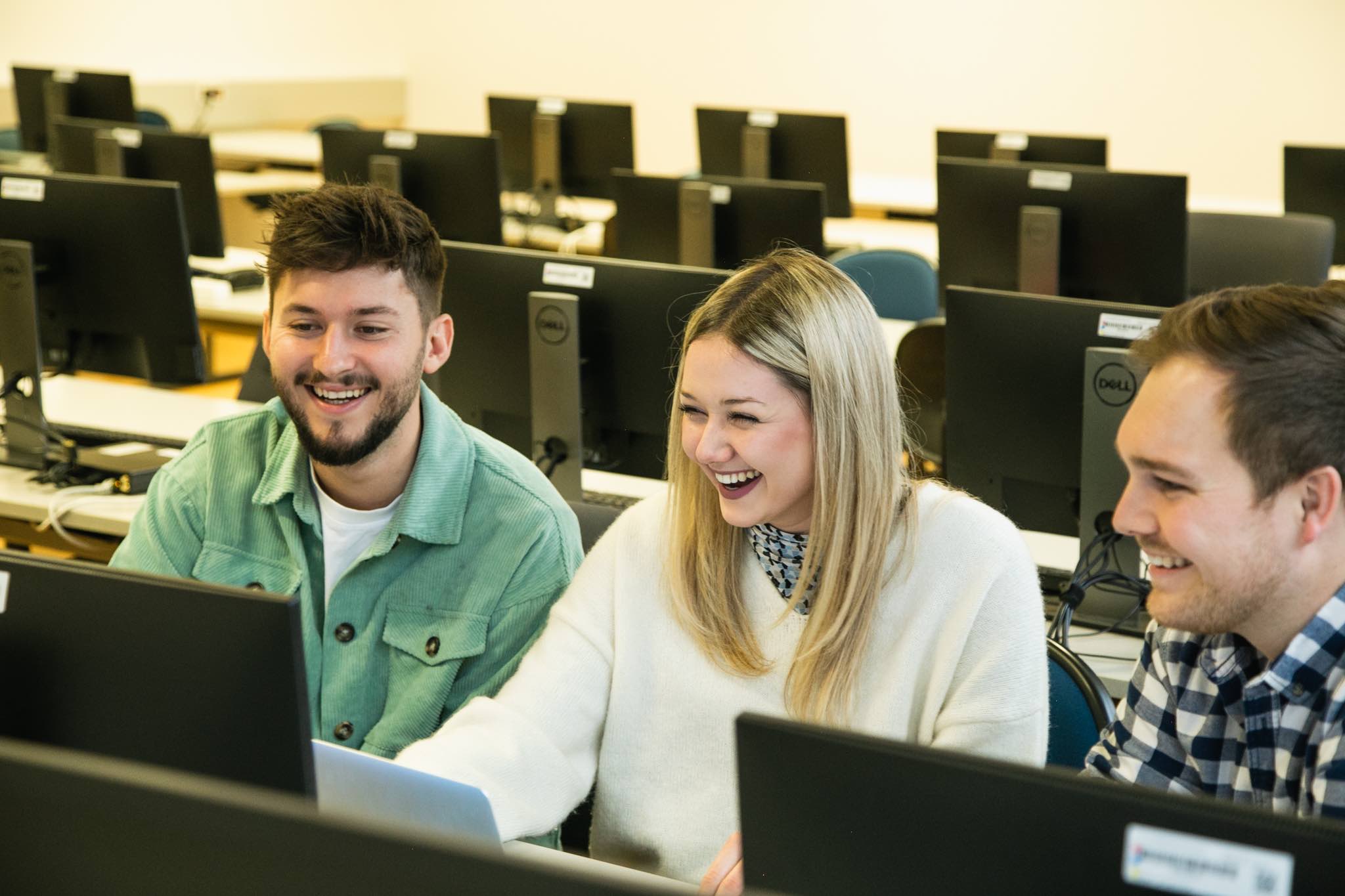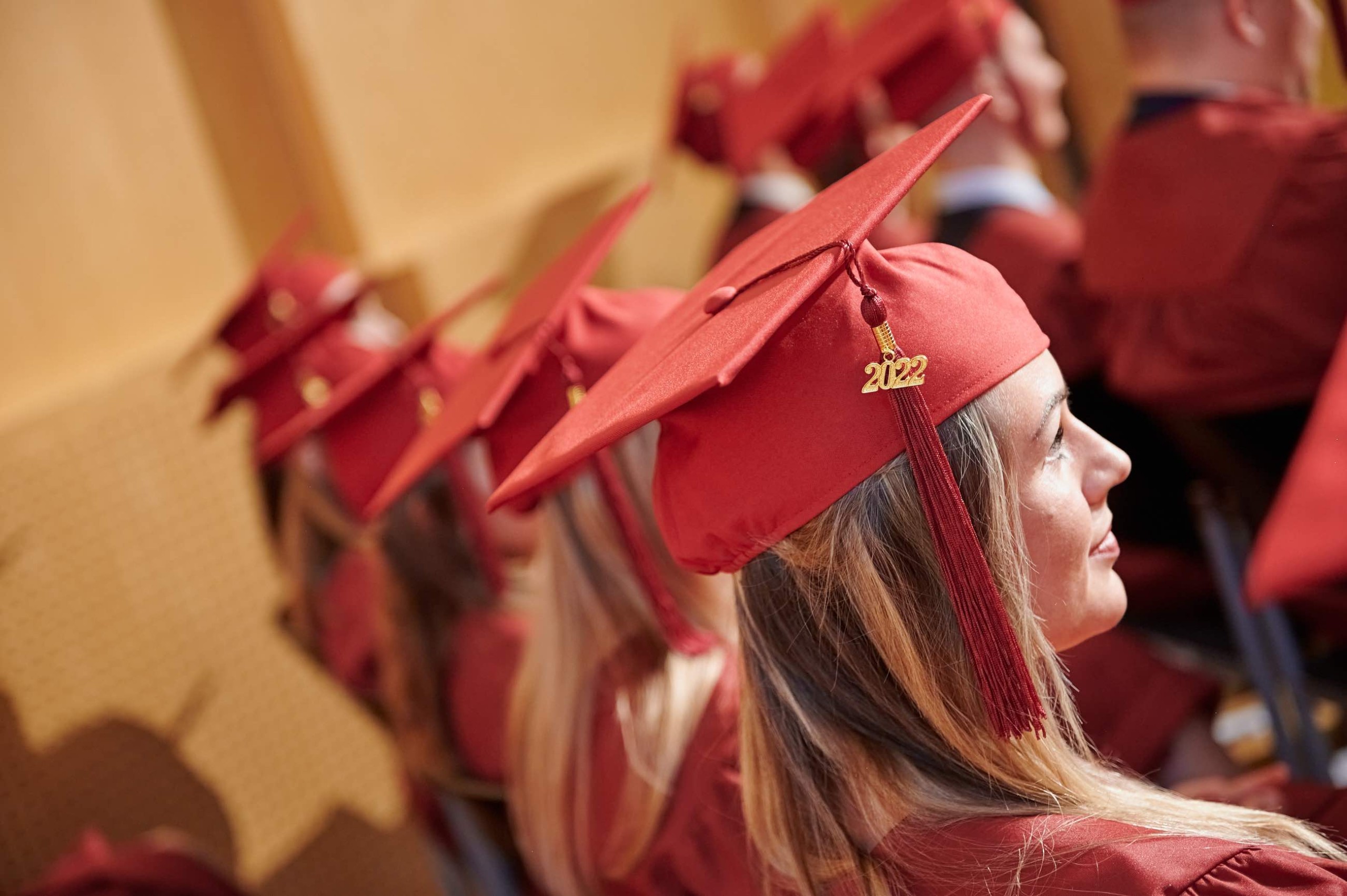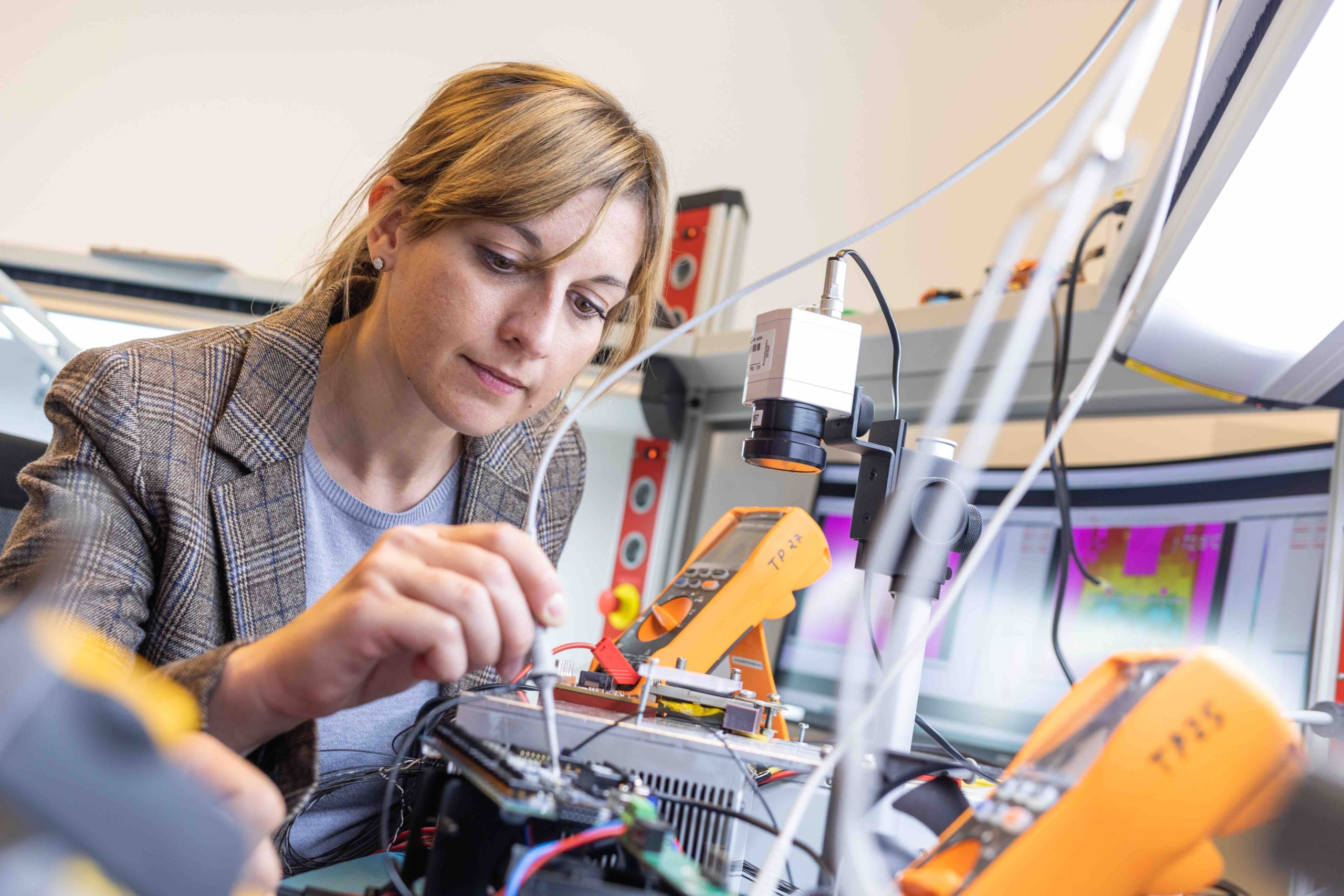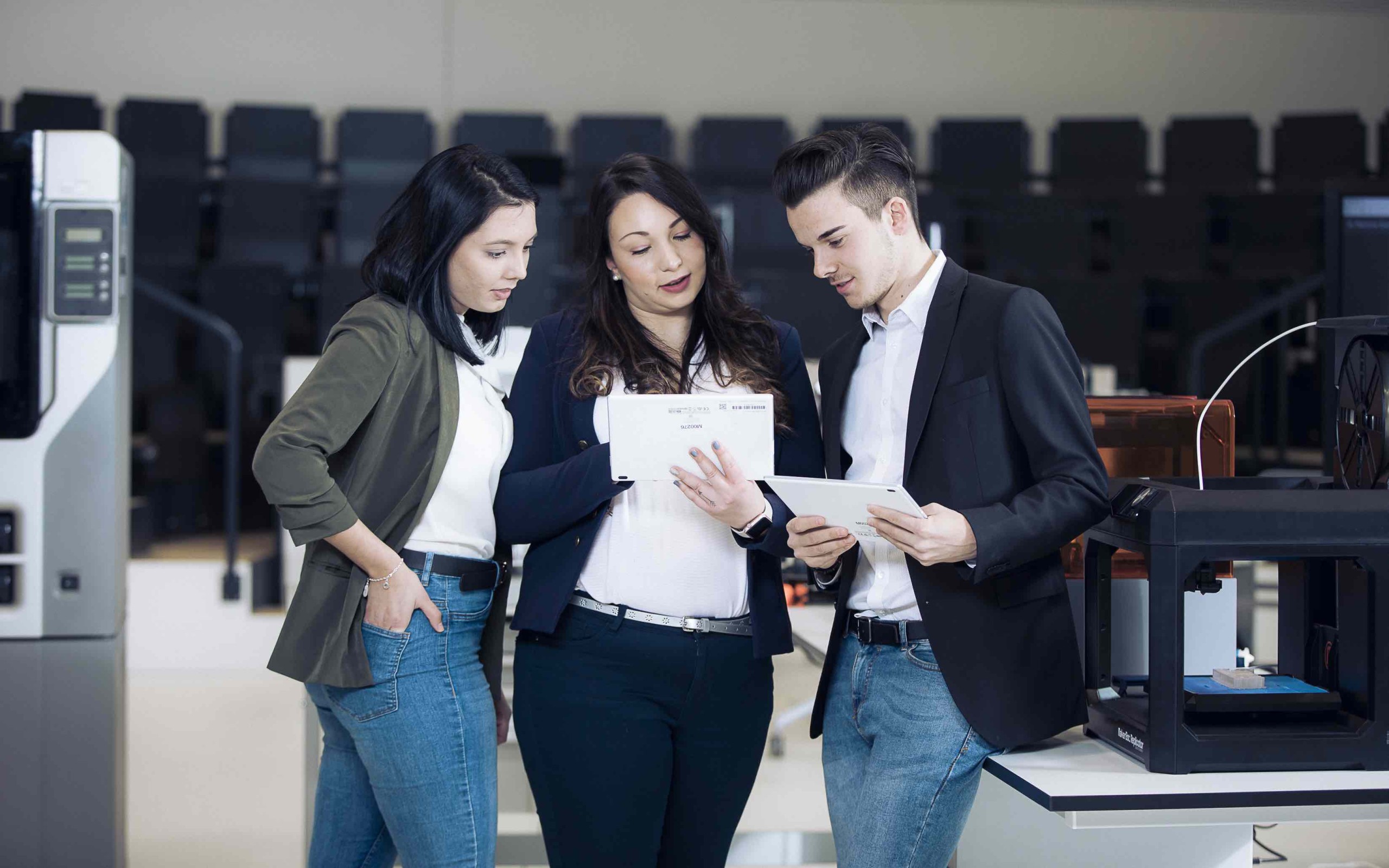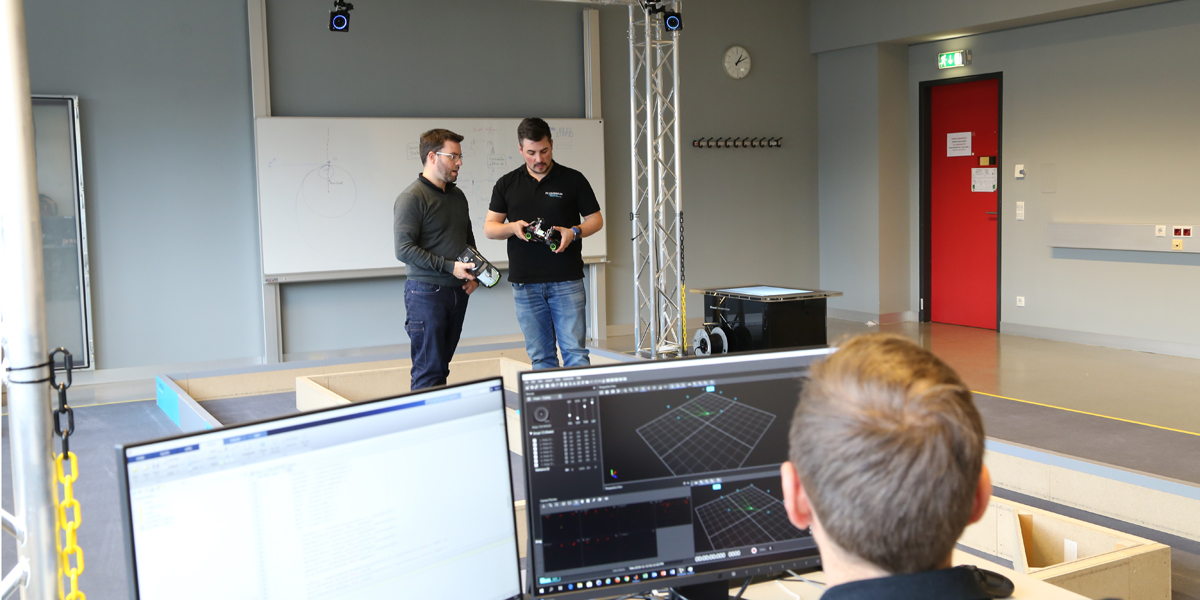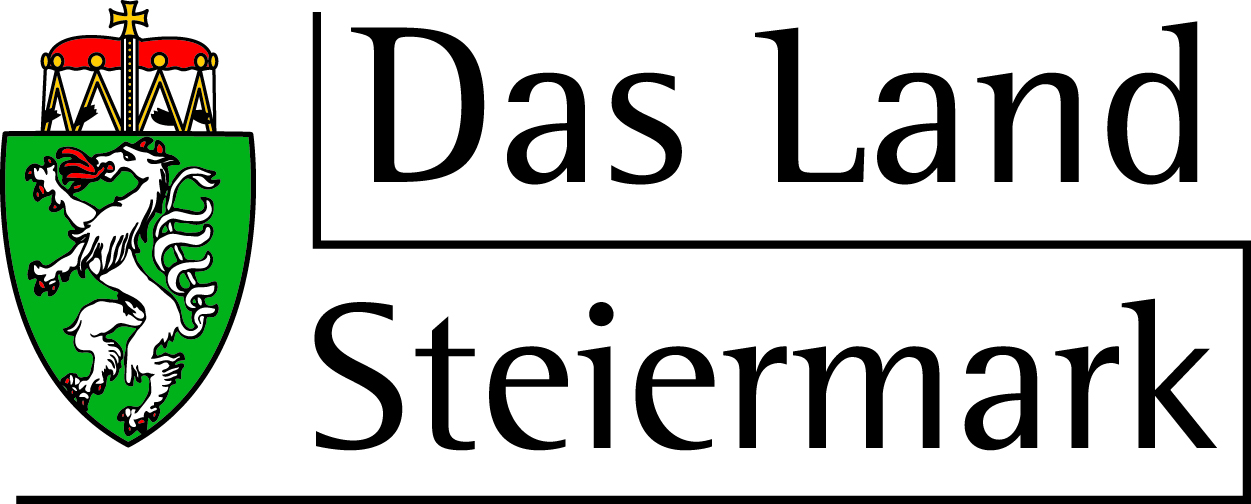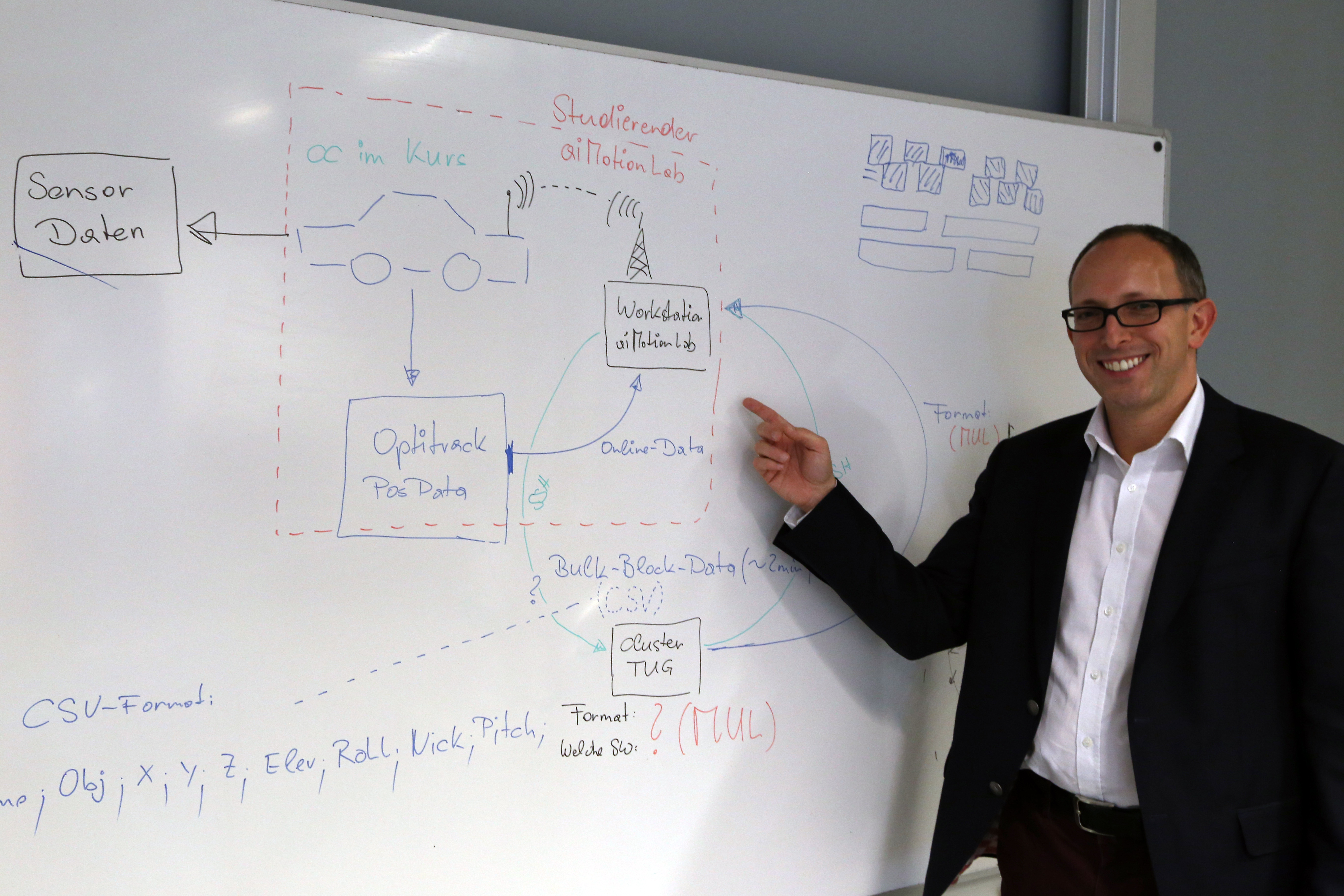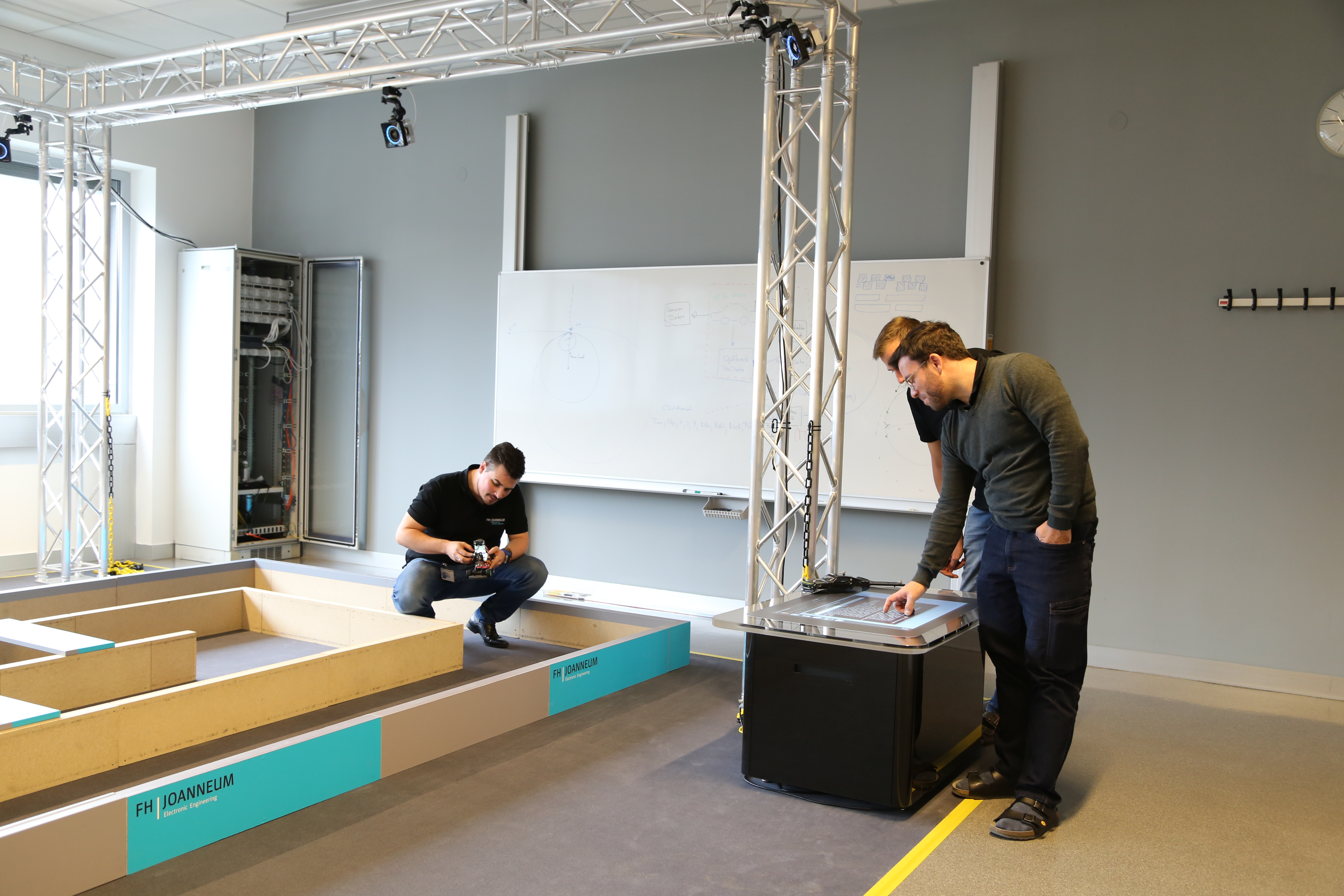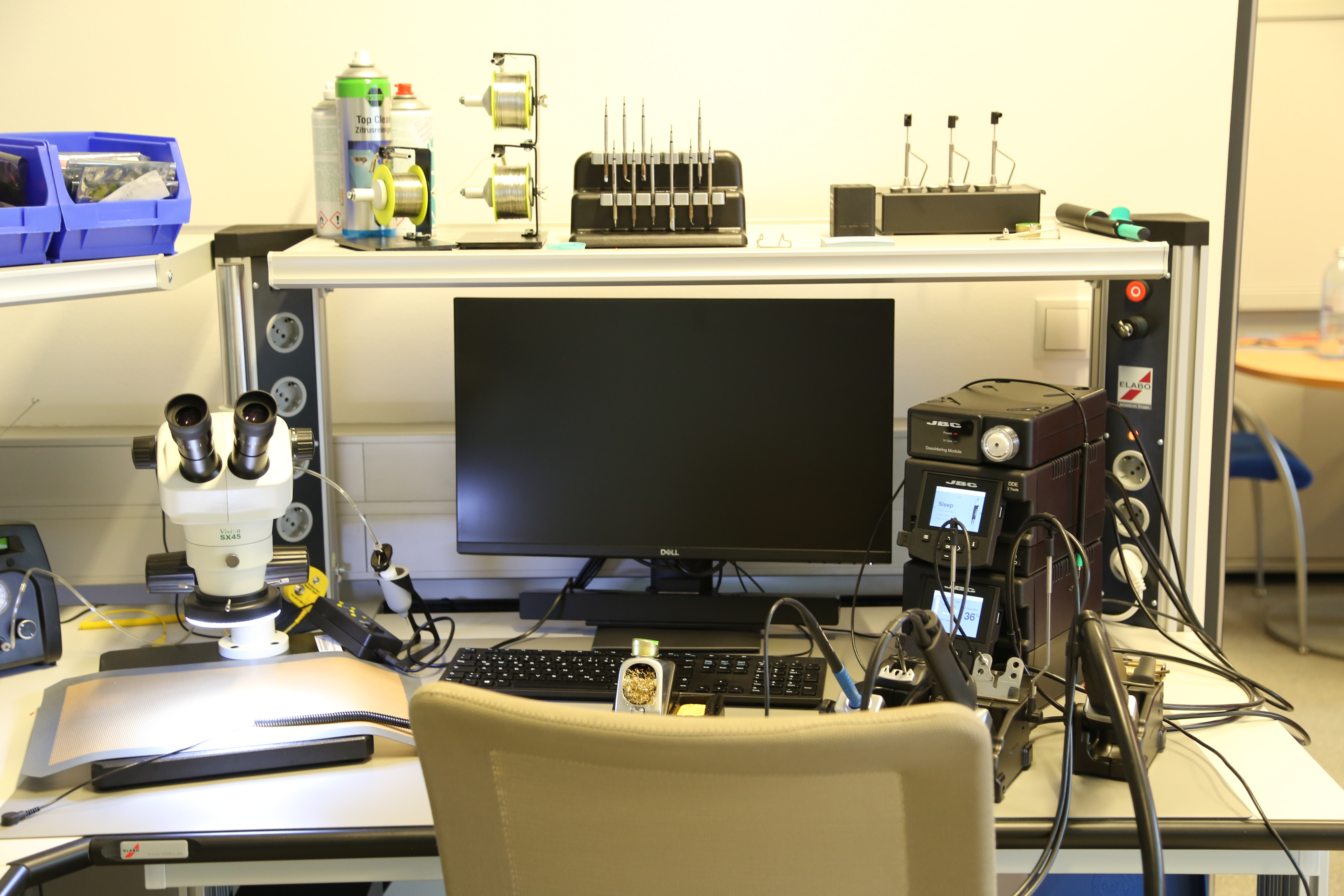The aiMotionLab uses expertise in algorithms and machine learning, software and hardware architectures, wireless and wired networks as well as electronics and sensor technology to carry out complex experiments on self-learning, mobile and connected cyber-physical systems. The aiMotionLab allows experts to develop and simulate new algorithms in AI research, while also testing and evaluating them in a controlled test environment.
Computing capacity for deep neural networks
The aiMotionLab combines a physical testing space with high-performance computer hardware, thus offering optimal conditions for the development and practical testing of AI algorithms. The data generated in the testing space are analysed and evaluated by the GPU grid, and the results are again made available for practical testing.
The data are usually analysed using pattern recognition with the aim of identifying and classifying the data based on semantic labels. Over the past few years, deep neural networks have become a key method in speech, image and signal processing since they have often proved superior to other approaches for these applications. However, deep neural networks require enormous computing power.

